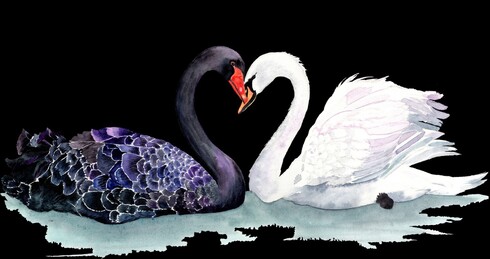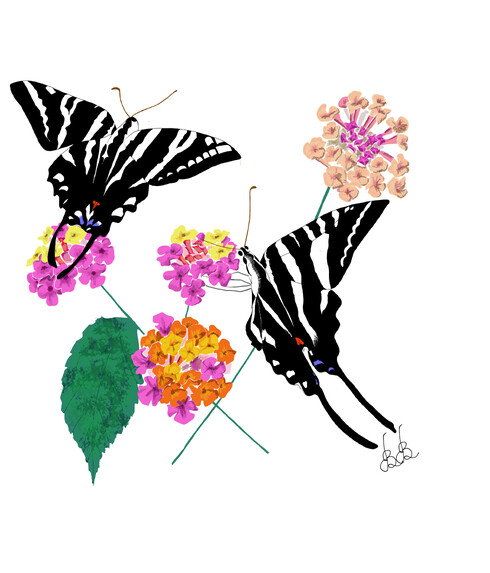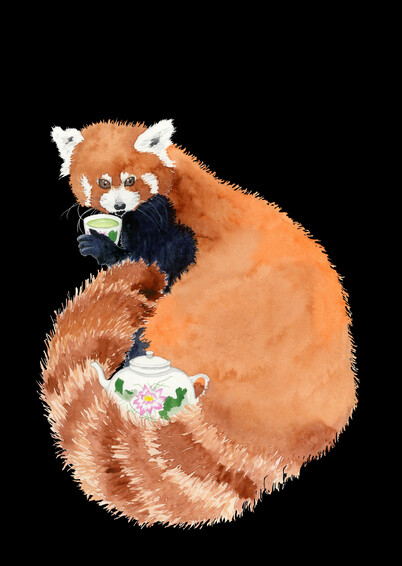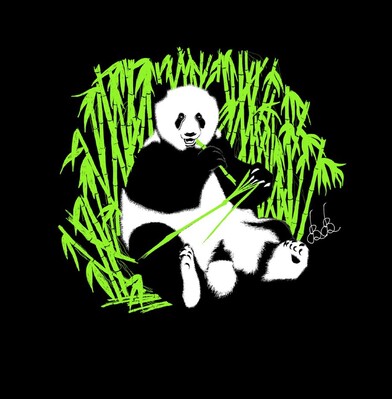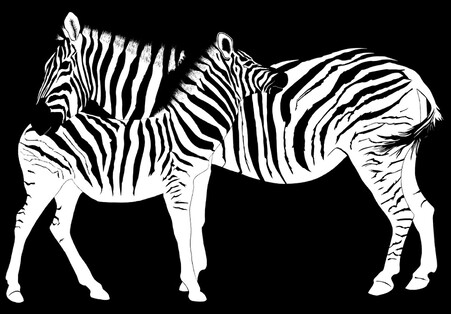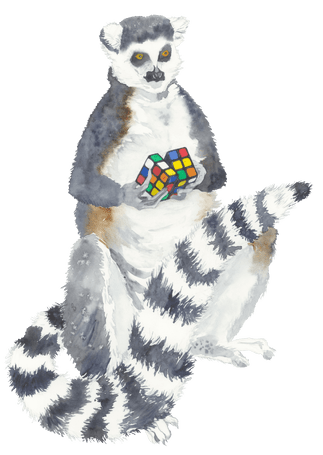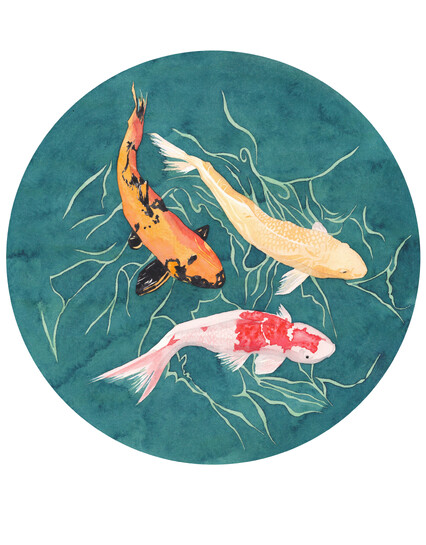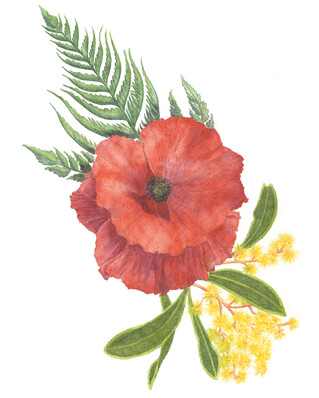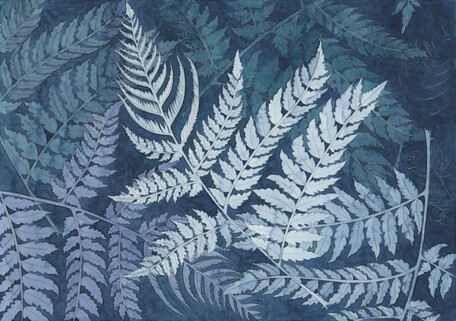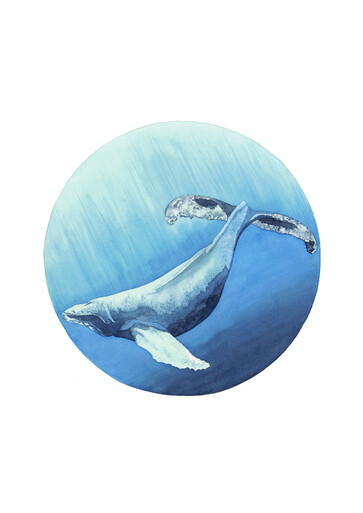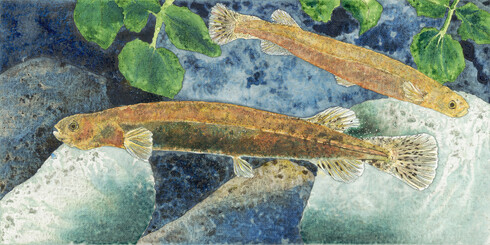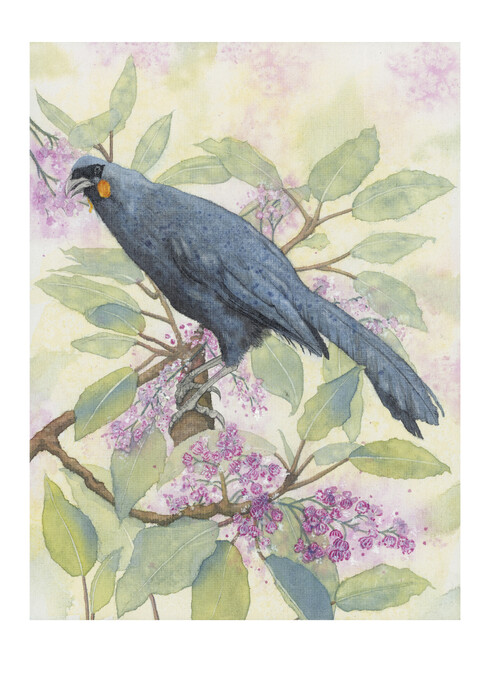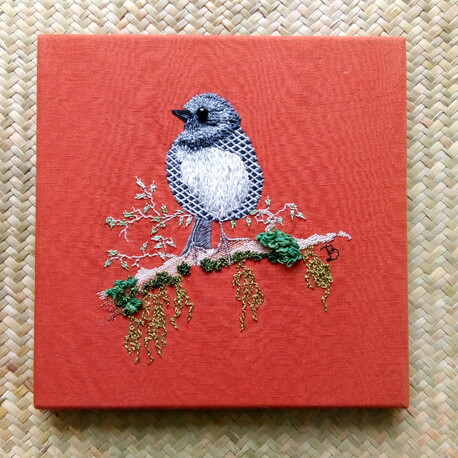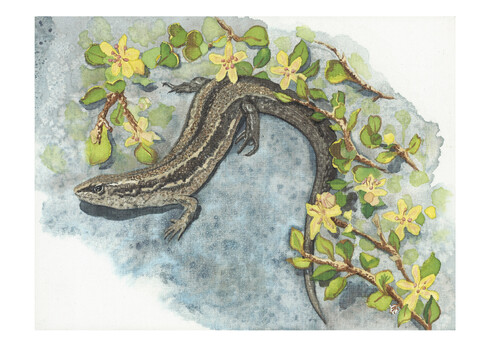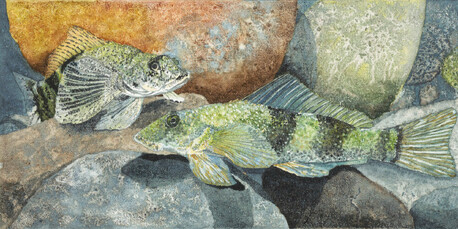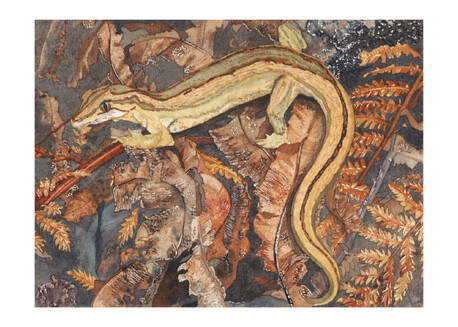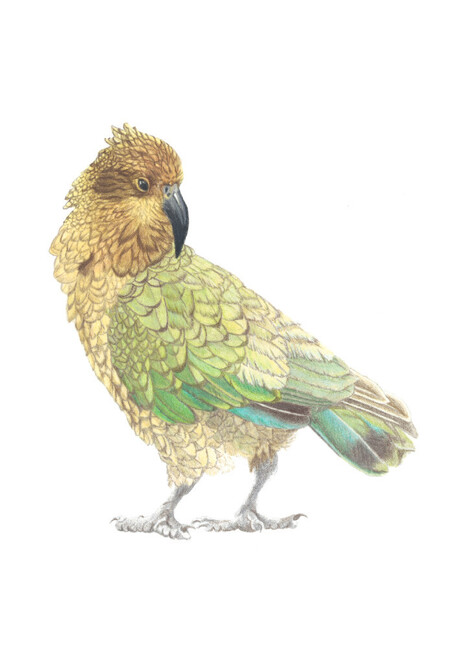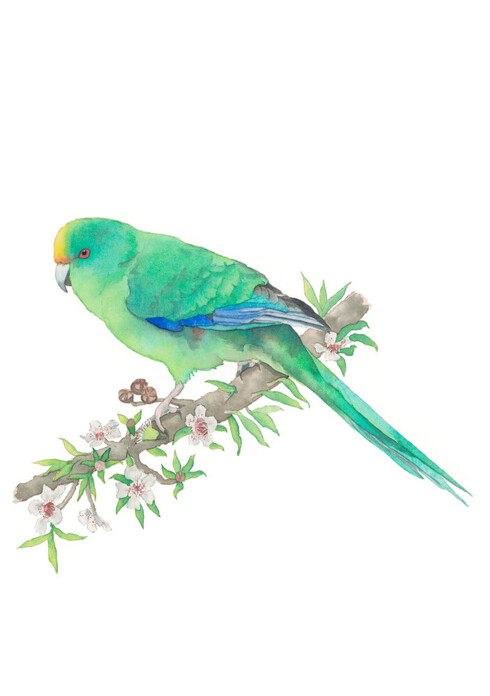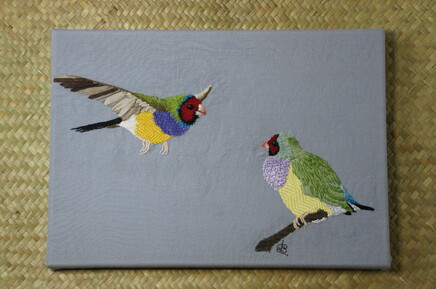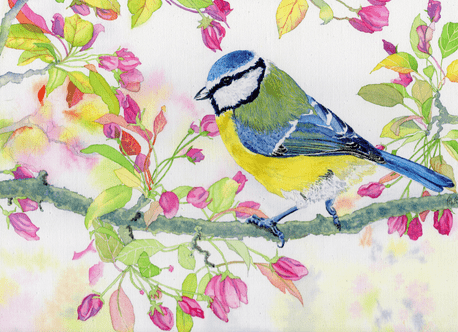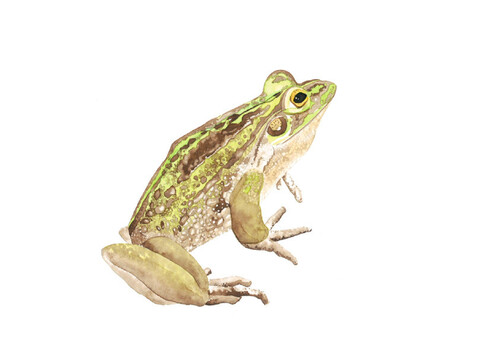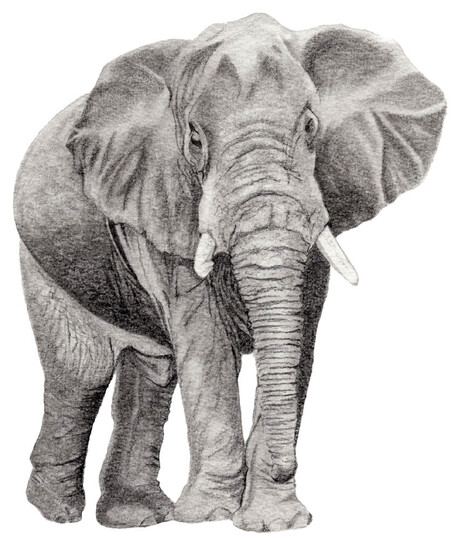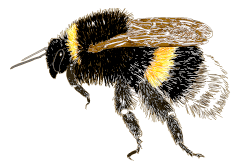Wildlife art, by Auntie Betty Illustration, to help raise conservation awareness for endangered species.
Betty's Life of Painting and Her Wildlife Art
Swan Lake
Apart from the artwork below, I generally focus on painting endangered species. Occasionally, the artist in me wants an 'intellectual' exercise, such as painting black and white creatures with watercolour. This is how I chose to paint the Australian black swan and a mute swan.
New Zealand was once home to a species of black swan related to the Australian black swan. Sadly, it is now extinct, due to excessive hunting.
Australian black swan (Cygnus atratus).
Location: southeast and southwest regions of Australia
Conservation status: Least concern
Mute swan (Cygnus olor) Location: Eurasia and the far north of Africa
Conservation status: Least concern
This painting was based on the reference photos by NoName, Pixabay.
Zebra Swallowtail Butterfly in Lantana
Generally, I paint endangered species, but sometimes it is lovely to paint a species, the zebra swallowtail butterfly, which is not endangered and celebrate that it thrives.
I also made a controversial decision to paint the butterfly on lantana flowers. Lantana is a noxious weed in New Zealand. It is native to Central and South America. It is a very beautiful and colourful plant, but should not be propagated in New Zealand. I chose to enjoy it in this painting instead of in my garden.
Zebra swallowtail butterfly (Eurytides marcellus).
Location: eastern United States and south-eastern Canada
Conservation status: Secure
This painting was based on the reference photos by Rachel Torgerson, Lisa Zins and Watts, Flickr (CC BY-SA 2.0 DEED).
Red Panda Tea Party
The red panda is a favourite among visitors in animal conservation parks.
These adorable little creatures are not actually related to the giant panda. I love tea and I thought that maybe pandas, from China, like drinking tea too, from porcelain teacups?
Red panda or lesser panda (Ailuropoda melanoleuca).
Location: China
Conservation status: Endangered
This painting was based on the reference photo by Pexels, Pixabay.
Ebony and Ivory Giant Panda
Who does not love pandas!
Like the zebra design below, I wanted to create another artwork where the black fabric of the sweatshirt was the hero of the piece, so I only painted the green bamboo and the white of the panda.
Giant panda or panda bear (Ailuropoda melanoleuca).
Location: China
Conservation status: Vulnerable
This painting was based on the reference photo by Andrew Wilson, Pixabay.
Ebony and Ivory Zebras
Zebra mare and foal.
I fell in love with the composition of this piece – the overlapping zebras, with their overlapping stripes. I really wanted to produce an artwork where the colour of the black hoodie, for which I was designing, was integrated with the artwork – the white areas of the zebra.
Zebras are one of my favourite species. When I wanted to create a monotone artwork, I knew a zebra must happen.
Plains zebra (Equus quagga, formerly Equus burchellii).
Location: southern and eastern Africa, south of the Sahara
Conservation status: Near threatened.
This painting was based on the reference photo by Patrizia08, Pixabay.
I Like to Rubik, Rubik
The world fell in love with the dainty and humorous primates, lemurs, when the animated movie, ‘Madagascar’, was released.
What many people do not know is that most lemur species are endangered, including the Ring-tailed lemur, a popular species in many zoos and wildlife conservation centres.
Hunting, habitat destruction (due to forestry) and the illegal exotic pet trade have all contributed to the endangerment of the lemur.
Ring-tailed lemur (Lemur catta).
Location: Madagascar
Conservation status: Endangered.
This painting was based on the reference photos by Tonda Tran (sontung57) and Angela (meisjedevos), Pixabay.
Koi Pond
It is no secret - I love fish.
I love watching fish swim. I have always love goldfish and koi; however, especially in the North Island of New Zealand, koi have been released into freshwater ways where they grow fat and large by feeding on native fish species, many of which are threatened. Although koi are beautiful, they do not belong in New Zealand waters.
This painting was based on the reference photo by Pexels, Pixabay.
New Zealand Edible Plants
This illustration shows array of edible plants from New Zealand, as I am intrigued by how people can survive by foraging, so have become very interested in native plants that are safe to eat and nutritious.
Top, from left to right – horopito (leaves, medicinal), pikopiko (young koru shoots), puha (stems, leaves)
Second band from the top, from left to right – pirita vine (shoots), kawakawa (leaves, medicinal), karamu (berries)
Third band – kotukutuku (fruit)
Fourth band – kokihi New Zealand spinach (leaves), tataromoa (leaves, medicinal)
Bottom – hakeke woodear mushrooms
My grateful thanks to Ang Wickham and Bart Acres for allowing me to paint from their lovely photos.
Harlequin Gecko Only Leaves Footprints
Harlequin geckos were discovered in 1969 Stewart Island/Rakiura, where they inhabit shrubland and wetlands.
Chief Seattle, a nineteenth-century leader of the Pacific Northwest native American tribe, the Duwamish, is credited with saying (about people's explorations of his native lands), “Take only memories and leave only footprints.” This gecko painting shares the same message - that we should only leave footprints when we are in the bush, and how we should leave the environment around us.
Harlequin gecko (Tukutuku rakiurae).
Location: New Zealand
Conservation status: Endangered.
This photo is based on the beautiful photo by herpitologist, Carey Knox (used with permission).
Southern Striped Gecko Only Leaves Footprints
These little geckos inhabit coastal forest and shrubland on several small islands in the Cook Strait.
Chief Seattle, a nineteenth-century leader of the Pacific Northwest native American tribe, the Duwamish, is credited with saying (about people's explorations of his native lands), “Take only memories and leave only footprints.” This gecko painting shares the same message - that we should only leave footprints when we are in the bush, and how we should leave the environment around us.
Southern striped gecko (Toropuku stephensi), also known as the Stephen's Island gecko, the Cook Strait striped gecko, Stephen's sticky-toed gecko and the striped gecko.
Location: New Zealand
Conservation status: Endangered.
This photo is based on the beautiful photo by herpitologist, Carey Knox (used with permission).
Marlborough Green Gecko Only Leaves Footprints
These little geckos grow to a maximum length of 70mm. They are green, with some individuals displaying gold markings. The underside of the gecko is a lighter green in females, and silvery in males.
Chief Seattle, a nineteenth-century leader of the Pacific Northwest native American tribe, the Duwamish, is credited with saying (about people's explorations of his native lands), “Take only memories and leave only footprints.” This gecko painting shares the same message - that we should only leave footprints when we are in the bush, and how we should leave the environment around us.
Marlborough green gecko (Naultinus manukanus), also known as the manuka gecko.
Location: New Zealand
Conservation status: Endangered.
This photo is based on the beautiful photo by herpitologist, Carey Knox (used with permission).
Kiwi Balancing Act
New Zealanders treasure kiwi, the unique, iconic native bird whose identity we have adopted.
There are five species of kiwi; four species are vulnerable or endangered. All five species are dependent on conservation measures to ensure their survival. According to DOC, there are about 70,000 kiwi but 20 birds die each week! Kiwi are very long-living birds and can live between 25 and 50 years; however, because they cannot fly, they are at risk from dogs, stoats and ferrets, and compete with rats for food.
These unique flightless birds are under threat from the moment the egg is laid. Mustelids (stoats, ferrets, weasels, etc.) and possums eat kiwi eggs. Cats and ferrets prey on kiwi chicks and dogs and ferrets decimate adult kiwi populations.
Did you know that only 5% of kiwi hatched survive in the wild?
Did you know that without intervention, only 10% of kiwi chicks survive to the age of six months?
According to the New Zealand Conservation Trust, 88% of kiwi chicks hatched in the North Island are killed within one hundred days of hatching. The most destructive predator of kiwi are stoats. It is estimated that they alone account for the deaths of 40% of the 88% mentioned above.'
Kiwi (Apteryx)
Location: New Zealand
Conservation status: Vulnerable or endangered.
This photo is based on the photo by Te Papa.
Kākāpō Calling
We had a pet African grey parrot when I was a child. She was hilarious and very much a member of the family. Since then, I have been fascinated with parrots - including New Zealand's utterly unique Kākāpō.
Kākāpō are fascinating! They are flightless and nocturnal!
Kākāpō (Strigops habroptilus)
There are only 247 birds left.
Location: New Zealand
Conservation status: Critically endangered.
This photo is based on the beautiful photo by Lydia Uddstrom (used with permission).
Lest We Forget
My ANZAC tribute to those who made the ultimate sacrifice to secure our freedom. Remembering those, from New Zealand and Australia, who fought in World War I, World War II and all conflicts and peace-keeping operations since 1945 .
This artwork is a symbol of the ANZACS - the troops who fought in World War I, on battle fields where the Flanders poppy grows. These men were from New Zealand (represented by the silver fern) and Australia (symbolised by the golden wattle). The silver fern and golden wattle are the national plants of New Zealand and Australia.
This Inktense and coloured pencil painting is based on the beautiful reference photos by Tatania Gerus (Wikipedia, CC 2.0 - silver fern), Rexness (Flickr, CC BY 2.0 - golden wattle) and Sigfried Poepperl (Pixabay - Flanders poppy)..
Silver Fern Filigree
New Zealand's national plant and symbol.
Silver Fern (Cyathea dealbata)
Māori name: ponga OR kaponga
The Silver fern can grow to 10m in height.
The earliest use of the silver fern as an official emblem was by the New Zealand Army during the Second Boer War. Since then, the silver fern has been used by the New Zealand Expeditionary Force during both world wars, and all Commonwealth war graves of fallen New Zealand soldiers have the silver fern engraved on their tombstones.
Silver fern fronds appear on the coat of arms of New Zealand.
The silver fern has become one of the most widely recognized symbols of New Zealand. (Wikipedia)
This watercolour painting is based on the beautiful reference photos by Brian Gratwicke (Flickr, CC BY 2.0) and Tatania Gerus (wikipedia, CC 2.0).
Humpback Whale in Summer Waters
Who isn't awed by the sheer size and magnificence of the gigantic beasts of the deep?
Southern Humpback whale (Megaptera novaeangliae)
Māori name: paikea
Although the most abundant large whale species in New Zealand waters, the Oceania group of southern humpback whales are endangered.
Calves measure 4 or 5 metres and grow to between 12 and 15 metres as adults.
Humpback whales migrate from their summer feeding grounds in New Zealand waters, to the Antarctic in winter, for breeding and calving.
Humpback whales are baleen feeders, filtering krill and small schooling fish like mackerel and herring from vast mouthfuls of water.
This watercolour painting is based on the beautiful reference photos by NOAA Photo Library (Flickr, CC BY 2.0) and Gregory Slobirdr Smith (Flickr, CC BY-SA 2.0).
Bee Among Daisies
Around the world, bee numbers are declining, including our native bees. Bees need flowers to feed on, flowers need to be pollinated by bees, plants need to be pollinated to produce fruit and vegetables. We eat fruit and vegetables. WE NEED BEES!
Tawny Nesocolletes (Leioproctus fulvenscens) foraging in Marlborough rock daisy (Pachystegia insignis)
Māori name: pī
Location: New Zealand
Conservation status: Unknown
These 10 mm long native bees live in the South Island of New Zealand. They are not honeybees, but nest underground, usually close to the plants from which they forage, such as plants of the Asteraceae family, like the Marlborough rock daisy. Marlborough rock daisy (Pachystegia insignis)is a beautiful daisy which only grows on rocky cliffs and coastal areas of the Kaikoura Ranges to northern Canterbury, in the South Island of New Zealand.
This watercolour painting is based on the photos by Te Papa (Leioproctus fulvenscens - Creative Commons license BY 4.0.) and by Bernard Spragg (Pachystegia insignis - Flickr - Public Domain license).
Canterbury Mudfish
I have always love drawing and painting fish. After seeing Angus McIntosh's gorgeous photos of these mudfish, with the light flashing on their skin, I wanted to capture them in that glow of gold instead of when they look more brown.
Canterbury Mudfish (Neochanna burrowsius)
Māori name: kowaro
Location: New Zealand
Conservation status: Critically Endangered
These scaleless fish are found in swampy or slow-flowing waterways of the Canterbury Plains between the Ashley and Waitaki Rivers.
In 1926, Canterbury farmer, Mr. A. Burrows, found mudfish aestivating in holes in the riverbank. It is speculated the fish’s scientific name is a pun both describing its burrowing behaviour as well as the name of the man who discovered them.
This watercolour painting is based on the photos by freshwater ecologist, Angus McIntosh (used with permission).
South Island kōkako
Presumed extinct, I still hope that the South Island kōkako may survive in remote forests of the South Island of New Zealand.
South Island kōkako (Callaeas cinerea)
Māori name: kōkako
Location: New Zealand
Conservation status: Relict
Once widespread in South Island forest, the species became very rare by the late 19th century.
With limited flight ability, these forest-dwelling birds hopped and bounded between branches and across the forest-floor.
Their nests were built slightly above ground-level, making their young a favourite food source for introduced predators.
So rare, these birds are believed to be on the brink of extinction (relict), if not already extinct.
This is set among delicate wineberry blossoms painted from a lovely photo by Steve Atwood (used with permission) and the kōkako is painted from Creative Commons photos from Te Papa.
‘Toutouwai’
‘Toutouwai’ is an original, one-of-a-kind, contemporary Jacobean embroidered artwork. I adore robins from all around the world, but have a soft spot for the South Island Robin species.
South Island Robin (Petroica australis)
Maori name: Toutouwai
Location: New Zealand
Conservation status: Declining
South Island robins are extremely friendly and curious birds. They are a favourite with trampers.
They are marvelous singers and can be found in forests all around the South Island of New Zealand. There is also the North Island robin and the Stewart Island robin.
The embroidery is based on the reference photo by Jakub Soltysiak (used with permission).
'Canterbury grass skink'
'Canterbury grass skink' is native to Canterbury, the region where I live. I am passionate about raising awareness of vulnerable species in Canterbury.
Canterbury grass skink (Oligosoma aff. polychroma Clade 4)
Location: New Zealand
Conservation status: Declining
This small, diurnal skink inhabits a range of open habitats.
It is also known as the Common Skink.
This photo is based on the beautiful photo by herpitologist, Carey Knox (used with permission).
'A Circus of Kea'
'A Circus of Kea' show the amazingly vivid flashes of colour concealed beneath the wings of kea.
I love all birds and have a soft spot for the 'clowns of the Alps'.
Kea (Nestor notabilis)
Māori name: kea
Location: New Zealand
Conservation status: Endangered
Once common, the world’s only alpine parrot is now endangered due to the debatable belief that these birds attack livestock, and numbers have been further depleted by lead and 1080 poisoning and road fatalities. Kea are omnivorous; highly intelligent and have been observed using tools and co-operating with other kea to achieve a goal. The collective noun for kea is ‘circus’, which suits their playful and curious personality.
This watercolour painting was based on the gorgeous photo by Noel Chignell (used with permission).
‘Pīwakawaka’
‘Pīwakawaka’ is an original, one-of-a-kind, contemporary Jacobean embroidered artwork. The fantail is my favourite bird in the garden, where I often see and hear both pied and melanistic fantails. Sometimes we are delighted by fantails visiting us inside the house.
Pied fantail (Rhipidura fuliginosa)
Maori name: Pīwakawaka
Location: New Zealand
Conservation status: Not threatened
The only fantail species in New Zealand, pīwakawaka is insectivorous and seldom still, as it flits about in search of flying insects. These gregarious little birds are commonly found in city gardens as well as forest.
Fantails frequent manuka plants, which attracts their favourite prey: flies and bees.
Fantails are not uncommon; however, the success of their breeding season is a helpful guide for environmentalists to indicate whether pest predators (which prey on fantails and their nests) have been eradicated in an area.
This embroidery is based on the reference photo by LorryM, Pixabay.
'Torrentfish / Panoko'
'Torrentfish / Panoko' is my favourite painting.
I am so delighted that it was adopted by a dear friend, who is a freshwater ecologist.
Torrentfish (Cheimarrichthys fosteri)
Māori name: panoko
Location: New Zealand
Conservation status: Declining
This declining migratory fish species lives in gravelled river rapids. The pelvic fins under the pectoral fins form a double hydrofoil allowing them to sits effortlessly in fast water . Torrentfish are threatened by extensive irrigation and water pollution.
They can reach a length of 20 cm but are usually much smaller.
Torrentfish are amphidromous: the fry migrate to the ocean after hatching but return to fresh water as juveniles, where they grow to adulthood.
This watercolour painting was based on amazing photos by University of Canterbury professor of Freshwater Ecology, Angus McIntosh (used with permission).
'Coromandel Striped Gecko / Toropuku inexpectatus'
After seeing a beautiful photo, taken by herpitologist, Dylan van Winkel, I knew I had to paint this gecko. I was fascinated by the different shades of brown, ranging from palest ivory and burnished copper to deepest chocolate.
Coromandel Striped Gecko (Toropuku inexpectatus)
Also called the Northern Striped Gecko.
Location: New Zealand
Conservation status: Vulnerable
This gecko was only discovered in 1997 and may be one of New Zealand’s rarest lizards. They are seldom seen as they are nocturnal and camouflaged in their habitat.
Painting based on the reference photo by Dylan van Winkel (used with permission).
'Rough Gecko / Moko Pārae'
'Rough Gecko / Moko Pārae' is my most popular painting to date.
Rough Gecko (Naultinus rudis)
Māori name: moko pārae
Location: New Zealand
Conservation status: Endangered
This small, endangered gecko inhabits the Kaikoura Ranges of the South Island of New Zealand, where they live in low-growing scrub.
Unlike most geckos, Rough Geckos are diurnal (active during the day), living in manuka, kanuka and other forest.
This watercolour painting was based on the detailed photo by Grant Macredie (used with permission).
'Kea'
This portrait of a kea is unusual as I seldom work in coloured pencil, even though I thoroughly enjoy it.
Kea (Nestor notabilis)
Māori name: kea
Location: New Zealand
Conservation status: Endangered
Once common, the world’s only alpine parrot is now endangered due to the debatable belief that these birds attack livestock, and numbers have been further depleted by lead and 1080 poisoning and road fatalities.
Kea are omnivorous; highly intelligent and have been observed using tools and co-operating with other kea to achieve a goal.
The collective noun for kea is ‘circus’, which suits their playful and curious personality.
Painting based on my own photo taken at Otira.
'Malherbe's Parakeet/Orange-fronted Parakeet /Kākāriki karaka'
This bird was a joy to paint. I used a couple of my favourite watercolour techniques: glazing and optical mixing.
Malherbe's parakeet (Cyanoramphus malherbi), also called the orange-fronted parakeet
Māori names: kākāriki or karaka
Location: New Zealand
Conservation status: Critically endangered
This critically endangered parakeet is only found in the South Island and four offshore islands of New Zealand. The species is in decline due to the destruction of their habitat and predation by pests like rats and stoats.
Kakariki parakeets rub themselves on the stems and leaves of manuka, and even chew the plant, to rid themselves of parasites.
Painting based on reference photo by Jon Sullivan Follow, Flickr. Used with permission.
'Pied Fantail / Pīwakawaka'
Painting 'Pied Fantail / Pīwakawaka' was a turning point in my art career - after painting it, I was inspired and challenged to paint more endangered creatures.
(Rhipidura fuliginosa)
Māori names: pīwakawaka, tīwakawaka or piwaiwaka
Location: New Zealand
Conservation Status: Not threatened
The only fantail species in New Zealand, pīwakawaka is insectivorous and seldom still, as it flits about in search of flying insects. These gregarious little birds are commonly found in city gardens as well as forests.
Fantails frequent manuka plants, which attract their favourite prey: flies and bees.
Fantails are not uncommon; however, the success of their breeding season is a helpful guide for environmentalists to indicate whether pest predators (which prey on fantails and their nests) have been eradicated in an area.
Manuka (Leptospermum scoparium)
Also called manuka myrtle or New Zealand tea tree
Māori name: manuka
Manuka plants have white or pink flowers, which attract flying insect pollinators like bees.
Insectivorous birds, like fantails, can be found hunting insects in manuka.
The honey produced from manuka contains several health benefits, which are also found in the leaves and bark of the plant.
This painting is based on the reference photo by LorryM, Pixabay.
International Wildlife Art
I also love painting endangered species from around the world.
'Koi Pond'
I love fish and I love watching fish swim.
Painting based on the reference photo by Pexels, Pixabay.
Mr. and Mrs. Gouldian Finch
‘Mr. and Mrs. Gouldian Finch’ is an original, unique, contemporary Jacobean embroidered artwork. We kept Gouldian finches as pets when I was a child, and their beautiful jewel-like colours still mesmerise me.
These microscopic Australian seed-eating finches were named by the English ornithologist, John Gould, after his late wife, Elizabeth, who illustrated many of his specimens.
The males’ plumage is more brightly coloured than the more delicate pastel-plumage of the hen.
Sadly, due to their popularity as pets and destruction by wildfires and predators, these exotic little birds are under threat.
I have always loved Gouldian finches. We kept them as pets when I was a child. I had no idea they were endangered in the wild.
Gouldian Finch (Chloebia gouldiae)
Also known as: Lady Gouldian finch, Gould's finch or the rainbow finch
Location: Australia
Conservation status: Near threatened or endangered in some localities.
'Ukraine'
The Eurasian Blue Tit Bird (Cyanistes caeruleus) exactly represents the national colours of Ukraine and is also native to Ukraine.
"This artwork is realistic but symbolic of the innocence and resilience of the people of Ukraine. My Mother's family is originally from Poland and the Czech Republic, so the current war feels really close to home and I want to do my bit to support the Ukrainians. I cannot think of a better representative to show my support for Ukraine.”
Eurasian Blue Tit Bird (Cyanistes caeruleus)
Location: Europe and Eurasia
Conservation status: Not Threatened
This painting is based on the photo by Waldemar Zielinski, Pixabay.
'Blue Tit in a Blossom Tree'
I was delighted to be commissioned to paint a special 80th birthday present for a dear family friend. The family wanted a watercolour painting of the lady's favourite bird, the Eurasian Blue Tit bird.
Eurasian Blue Tit Bird (Cyanistes caeruleus)
Location: Europe and Eurasia
Conservation status: Not Threatened
'Green and Golden bell frog'
This frog was Betty's first painting of an Australian native species.
Green and Golden bell frog (Ranoidea aurea)
Also known as: green bell frog, green and golden swamp frog and green frog
Location: Australia
This is a threatened Australian native ground-dwelling tree frog, introduced to New Zealand, where its survival is more successful although it is regarded as feral and therefore, unprotected. Though insectivorous, these frogs will also consume worms and mice.
This watercolour painting was based on photos I took at Willowbank Wildlife Reserve.
'African Elephant Bull'
I love elephants - they are highly intelligent and grieve when one of the herd passes away. Despite their gigantic size, they can move extremely quietly.
African Bush Elephant (Loxodonta africana)
Location: Most of the African continent
Conservation status: Endangered
Tragically, these giant beasts of the African bush, are poached for their ivory tusks.
This picture was completed in graphite pencil on watercolour paper.
'Giraffe'
I think giraffe are one of the most graceful of creatures.
During a safari trip many years ago, we stood only a few metres from a herd of giraffe after our viewing truck broke down. The giraffe were calm and we enjoyed seeing them so close.
South African giraffe (Giraffa camelopardalis giraffa)
Location: Southern Africa
Conservation status: Vulnerable
I live a few minutes from the local conservation park, where a herd of giraffe reside. Even living in New Zealand, I can still be close to these giants of the African veld.
